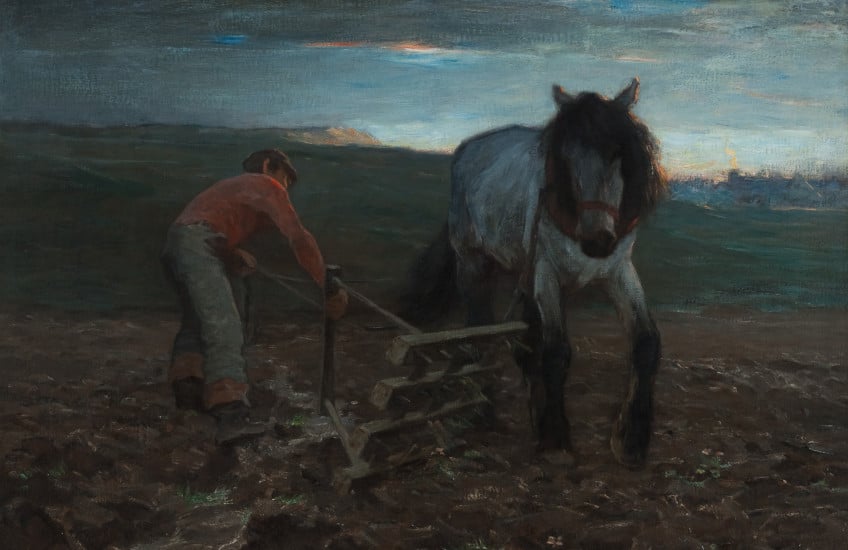
>> Inspired by global art movements such as the American and French Barbizon schools, Horatio Walker’s Turning the Harrow – Early Morning demonstrates the artist’s interest in painting simple, nostalgic views of real-life often set in the bucolic landscape of the Île d’Orléans in Quebec. Anne-Marie Bouchard, curator of modern art at the Musée national des beaux-arts du Québec explains.
>> Just as the American Barbizon painters, Walter was really influenced by the French Barbizon school. And he kind of valued simple and pastoral scenes painted directly from nature. He liked to paint the kind of traditional activity mostly taking place during the sunrise. And he always painted the same kind of scenes. I mean it was sheeps, cattles, chickens, pigs, always in the sunset or sunlight with the peasant working by their side. And he was really interested in just trying to put a kind of majestic landscape in which the animals could be at their most beautiful. He put a lot of effort in depicting the way of life and he had the kind of idea that the peasant and his relation to the landscape was conveying a kind of spiritual strength that was really particular. It was an idea that was absolutely generalized in French painting at the same time. And that was really popularized also by the political parties that were seeing the peasant and also the labourer as someone who had a kind of authenticity that was different from what we were able to see in the modern cities. And that it was through the peasant way of life and through the peasantry and the rural life that we were able to find back something we had lost in the industrialization. Walker promoted the kind of romantic concept of the landscape and this is maybe why he kind of fell in love with the Île d’Orléans when he first went there during the 1890s. He wasn’t the only one at that time, but I guess since we could find on the Côte-de-Beaupré James Wilson Morrice and Maurice Cullen at the turning of the century. But they were already working in an impressionist way which was not the case with Walter who kind of stayed close to a more romantic depiction of the landscape with those kind of majestic sunrise and sunsets that he painted in a really different way. There was a distance with which Cullen or Morrice painted the Côte-de-Beaupré and there was not so much distance in the way Walter did because he lived with them most of the time since he had his omen on the Île d’Orléans also. And so he was not as ideologically engaged as was Millet or Courbet in France. They kind of had this relation with political views that it was possible to see that in their painting. We don’t see that in Horatio Walker. And so, he’d really stick to a romantic and nostalgic view of the landscape that was really close to the French Barbizon School and also to the American Barbizon School which I think he was in contact with when he went to New York City a couple of times, so, I mean he certainly know them really well.